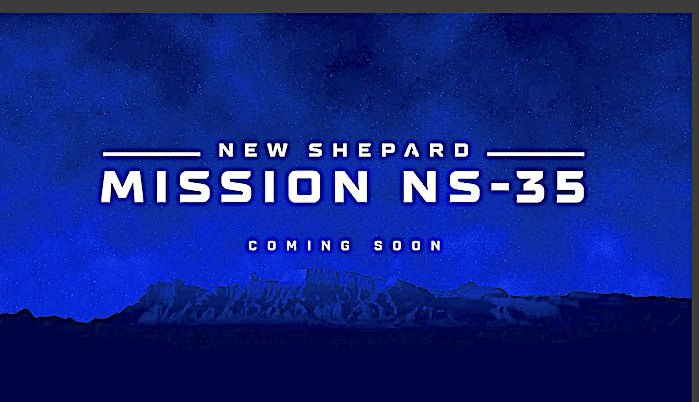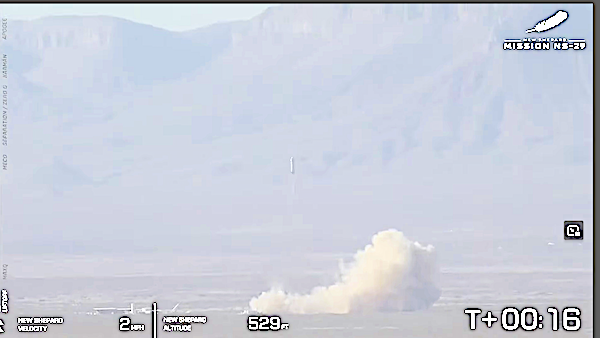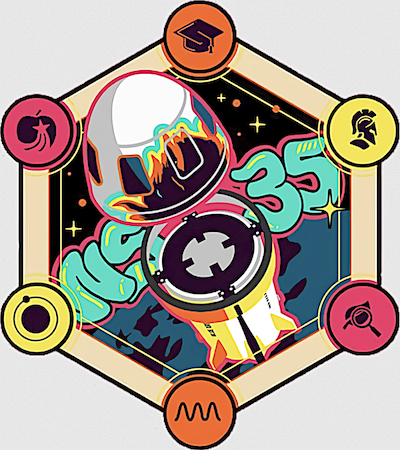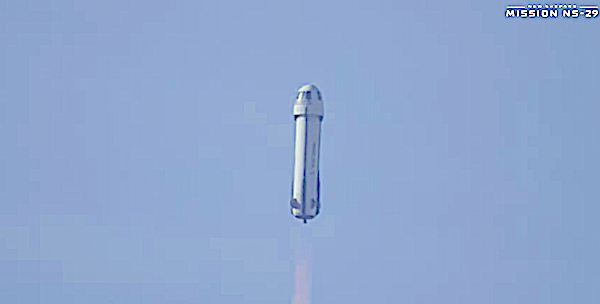
Blue Origin’s next New Shepard flight, NS-35, is an uncrewed mission with more than 40 scientific and research payloads onboard. Our next NS-35 launch attempt will be Tuesday, August 26. The launch window opens no earlier than 7:30 AM CDT / 1230 UTC. Watch the live webcast starting 15 minutes before liftoff
NS-35 is the 35th flight for the New Shepard program. This flight will fly more than 40 scientific and research payloads to space and back, including 24 experiments from NASA’s TechRise Student Challenge and payloads for Johns Hopkins Applied Physics Laboratory, Oklahoma State University, University of Florida, Carthage College, University of Central Florida, Teledyne, Space Lab Technologies, and Teachers in Space, among others.
New Shepard’s 35th mission targets liftoff on Saturday, August 23, will fly more than 40 payloads to space

Blue Origin’s next New Shepard flight, NS-35, is an uncrewed mission with more than 40 scientific and research payloads onboard. This is the program’s 35th mission and will bring the total number of payloads flown on New Shepard to more than 200. The launch window opens on Saturday, August 23, at 7:30 AM CDT / 1230 UTC from Launch Site One in West Texas. The webcast will begin 15 minutes before liftoff.
The payload manifest includes 24 experiments from NASA’s TechRise Student Challenge, along with thousands of postcards on behalf of Club for the Future, Blue Origin’s STEAM-focused nonprofit. As part of its mission, Club for the Future works with organizations like NASA, universities, non-profits, and K-12 schools to inspire the next generation of space explorers. The organization has engaged nearly 95 million people globally through initiatives including Postcards to Space, standards-aligned lessons to help teachers, and an ambassador program. Students can submit their own digital postcards to fly to space here
The mission will provide over three minutes of clean microgravity for experiments from a range of organizations, including NASA, Johns Hopkins Applied Physics Laboratory, Oklahoma State University, University of Florida, Carthage College, University of Central Florida, Teledyne, Space Lab Technologies, and Teachers in Space, among others.

This flight utilizes our dedicated payload capsule, RSS H.G. Wells, and newest New Shepard booster, the same vehicle combination that flew on NS-29
and successfully demonstrated lunar gravity simulation inside the capsule.
NS-35 Manifest Highlights
- NASA TechRise Student Challenge, Future Engineers: The NASA TechRise Student Challenge
provides a hands-on opportunity for students in grades 6-12 at U.S. schools to gain critical skills in engineering, computing, electronics, and more that will be required for America’s technical workforce. The 24 student payloads include experiments on space farming, medical solutions, and the behavior of liquids in microgravity. NASA’s Flight Opportunities program manages TechRise, which is administered by Future Engineers. A.R.E.S., Ecoatoms: The A.R.E.S. payload is the first of its kind, featuring a unique structure designed for chemical coatings in microgravity. The experiment includes 432 sensors that will be coated in space simultaneously. NASA’s Flight Opportunities program provided funding for this payload.
Biological Imaging in Support of Suborbital Science (BISS), University of Florida: Principal investigators Rob Ferl, who flew on NS-26, and Anna-Lisa Paul, are adapting ISS-based technology for suborbital use with their experiment, BISS. The upgraded FLEX fluorescence imaging system is flying for the fifth time on New Shepard and enables increasingly precise and dynamic understanding of biological responses to suborbital missions. NASA’s Flight Opportunities and Biological and Physical Sciences programs provided the funding for this payload.

Propellant Refueling and On-Orbit Transfer Operations (PROTO) & Microgravity Ullage Detection (MUD), Carthage College: Carthage College Space Science program’s PROTO experiment is collaborating with NASA Johnson Space Center to test new alternatives to measure spacecraft propellant levels in microgravity. MUD is a non-invasive method to locate the liquid-vapor interface in spacecraft fuel tanks during microgravity. The system incorporates acoustic vibrations and external sensors to detect whether the tank wall is in contact with liquid or gas, which is critical for safe in-space refueling. This experiment is flying for the third time with New Shepard. Both payloads are supported by NASA’s Flight Opportunities program and the Wisconsin Space Grant Consortium.
EDR Fuel Cell, Teledyne: In collaboration with NASA’s Glenn Research Center, Teledyne has spent over a decade developing a fuel cell technology that generates electricity and water from hydrogen and oxygen supplies aboard space vehicles. This experiment will test the system across all mission phases and serve as a foundational step toward scaling up power and water production to support long-term lunar and Martian habitation.
TIS-3 & TIS-4, Teachers in Space (TIS): Teachers in Space provides training and flight opportunities for classroom spaceflight experiments designed by teachers and their students. This payload is flying experiments from New Mexico, New York, and Maine focused on radiation detection and protection, sound level detection, and environmental data collection. After the flight, teachers and students will analyze and present their findings on the Teachers in Space website, at conferences, and at science fairs. Findings from previous TIS experiments on New Shepard can be found here.
- Post
